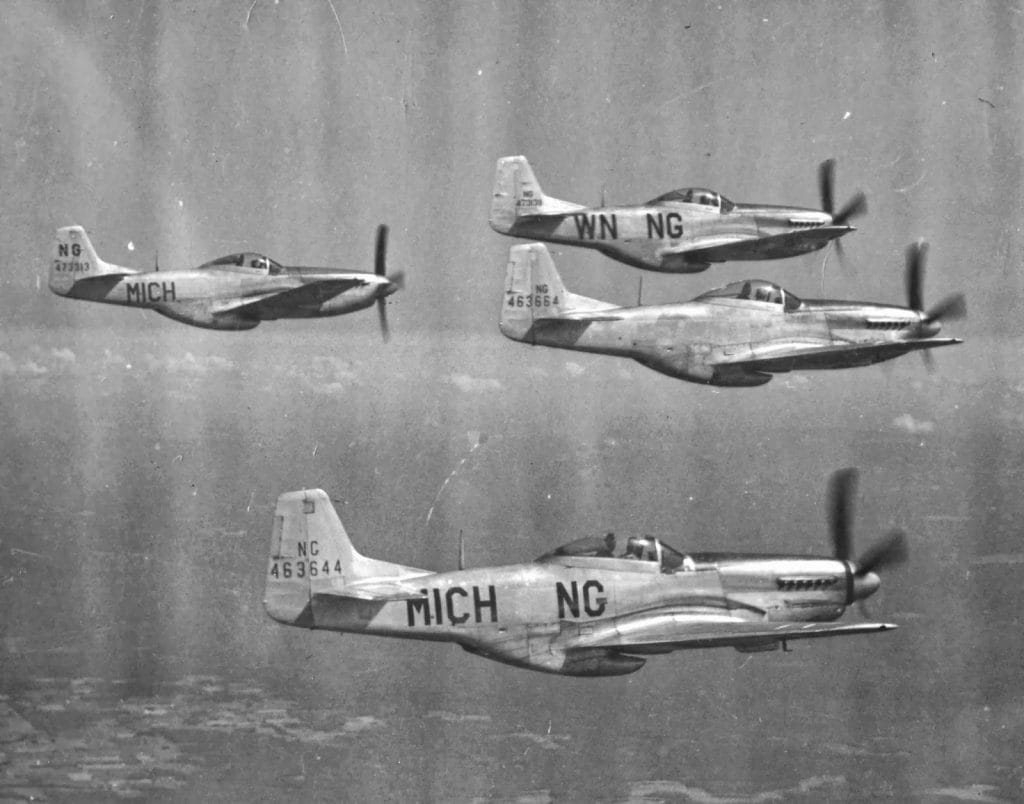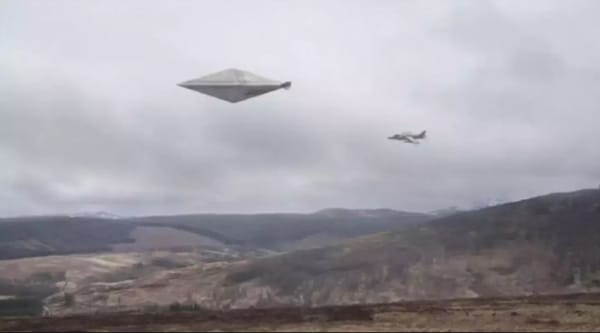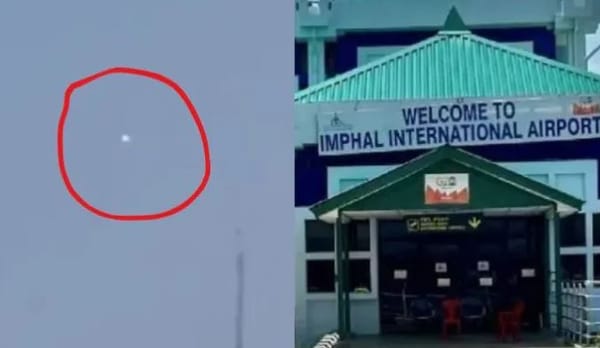The 1948 Mantell UFO Incident

On January 7, 1948, Captain Thomas F. Mantell, a pilot with the Kentucky Air National Guard, died while on a mission to investigate an unidentified aerial object near Franklin, Kentucky. Mantell, flying a P-51 Mustang, pursued the object to high altitudes but lost consciousness due to a lack of oxygen and crashed. The incident became one of the earliest high-profile UFO cases in the United States.
Initial reports indicated that Mantell's pursuit was triggered by a sighting of an unusual object in the sky, later speculated to be a high-altitude Skyhook balloon, a top-secret military project at the time. While the incident received considerable media attention and spurred various rumors, the official investigation by the United States Air Force's Project Blue Book concluded that the object Mantell pursued was likely one of these balloons. The case remains notable for its implications regarding early UFO reports and military aviation.
The Incident
On January 7, 1948, the Kentucky Highway Patrol reported an unidentified flying object near Madisonville, Kentucky, prompting Godman Army Airfield at Fort Knox to investigate. The object was initially observed at a distance and described as an unusual aerial presence, which could not be immediately identified by those on the ground. In response, four F-51D Mustang fighters from the 165th Fighter Squadron of the Kentucky Air National Guard were dispatched to investigate, with Captain Thomas F. Mantell piloting one of the aircraft.
Captain Mantell, along with his squadron, was instructed to approach and identify the object. As Mantell climbed to intercept the object, his wingmen remained at a lower altitude due to inadequate oxygen equipment for high-altitude flight. Mantell’s aircraft, also lacking proper oxygen supplies for such elevations, continued to ascend. He reached an altitude of approximately 15,000 feet before pushing higher to 22,000 feet.
According to reports, Mantell described the object as "metallic and of tremendous size," although this account was later questioned, as no concrete record of Mantell’s exact description was found. During the pursuit, Mantell's communications with his squadron and the control tower became increasingly erratic. His wingmen attempted to warn him to halt the climb due to oxygen depletion, but Mantell proceeded.
The conditions at high altitude were harsh, with the thin atmosphere making oxygen essential for pilots. Mantell, flying without supplemental oxygen at this extreme altitude, began to experience the effects of hypoxia. As he ascended further, he lost consciousness due to oxygen deprivation. This loss of control caused his P-51 Mustang to enter a spiraling descent.
Witnesses on the ground observed the aircraft descending in a spiral pattern. Mantell's plane eventually crashed on a farm south of Franklin, Kentucky. The impact scattered wreckage across the site. Emergency personnel who arrived at the scene recovered Mantell’s body from the wreckage. His seatbelt was found to be shredded, and his wristwatch had stopped at 3:18 p.m., the estimated time of the crash.
The pursuit of the unidentified object and Mantell’s subsequent crash was widely reported, marking the incident as one of the notable early UFO-related events.

Aftermath
The Mantell UFO incident quickly gained national attention and sparked considerable media interest. As with many early UFO cases, speculation and sensationalism soon surrounded the event. Various theories emerged, ranging from claims of alien spacecraft to assertions that Mantell had been involved in a secret military encounter.
Investigation
In the wake of the crash, the United States Air Force initiated an investigation to determine the cause of the incident. The primary focus of the investigation was to understand what Mantell had been pursuing and why his aircraft had crashed.
The Air Force's Project Blue Book, established to investigate UFO sightings and incidents, eventually concluded that Mantell had likely been pursuing a Skyhook balloon. Skyhook balloons were large, high-altitude balloons used for collecting atmospheric data and were part of a top-secret program during the late 1940s. These balloons could ascend to altitudes above 100,000 feet, making them potentially visible to pilots at lower altitudes.
Project Blue Book’s investigation found that the Skyhook balloon would have appeared as a large, metallic object from a distance. At the time, the balloon was classified and unknown to the public, including Mantell. It was determined that Mantell’s lack of supplemental oxygen at high altitudes led to his loss of consciousness and subsequent crash. His plane’s rapid descent was attributed to the uncontrolled spiraling caused by his incapacitation.
Further investigation revealed that Venus, a bright planet, was not a plausible explanation for the sighting. Although initially considered, Project Blue Book investigator J. Allen Hynek later retracted this hypothesis, noting that Venus was not bright enough to account for the observations reported by witnesses.
Public Reaction and Rumors
The Mantell incident was heavily covered by newspapers across the United States, and the story became a focal point in the burgeoning UFO lore of the time. Sensational rumors circulated, including claims that Mantell had been shot down by an extraterrestrial craft, that his body had been found with unexplained injuries, or that the wreckage was radioactive. However, investigations did not substantiate these claims, and the Air Force specifically refuted several of them.
UFO historian Curtis Peebles noted that many of these rumors lacked evidence and were dismissed by later analysis. The incident became a case study in how UFO sightings could be influenced by and contribute to public and media speculation.
Official Conclusions
In summary, the official conclusion of the Air Force's investigation was that Mantell’s pursuit of the object led him to a dangerous altitude without sufficient oxygen. The object he chased was identified as a Skyhook balloon, a fact that was not known to Mantell or the general public at the time. The incident remains a significant early example of how military and governmental secrecy regarding advanced technology could contribute to UFO sightings and misunderstandings.
Possible Explanations
Several explanations have been proposed for the Mantell UFO incident, though none have achieved universal acceptance:
- Skyhook Balloon: The most widely accepted explanation is that Mantell was pursuing a Skyhook balloon, a top-secret military project at the time. These high-altitude balloons, designed for atmospheric research, could appear as large, metallic objects from a distance. This explanation is supported by Project Blue Book's investigation, which concluded that the balloon was likely the object Mantell was chasing.
- Venus: Initially considered as a possible explanation, it was thought that the bright planet Venus might have been mistaken for a UFO. However, this theory was later retracted by investigator J. Allen Hynek, who found that Venus was not visible in the sky conditions reported and did not adequately match the description of the observed object.
- Misidentified Aircraft or Weather Phenomenon: Some have suggested that Mantell might have been pursuing a conventional aircraft or a weather balloon. However, given the object's apparent size and altitude, this theory does not fully account for the observations reported.
- Extraterrestrial Craft: Given the mysterious nature of the sighting and the initial lack of identification, some proponents argue that the object could have been an extraterrestrial spacecraft. This theory, while popular in UFO lore, lacks concrete evidence and is considered less plausible compared to the balloon explanation.
While various explanations have been put forth, the most substantiated remains the Skyhook balloon theory. However, the enduring fascination with UFOs means that the possibility of an extraterrestrial origin continues to capture public imagination.
Conclusion
The Mantell UFO incident remains one of the most intriguing early cases in UFO history. The official investigation by Project Blue Book concluded that Captain Thomas Mantell's fatal crash was the result of his pursuit of a high-altitude Skyhook balloon, a top-secret military project at the time. Despite this explanation, the case has fueled ongoing speculation and intrigue, partly due to the sensational nature of the early reports and the enduring fascination with extraterrestrial possibilities. While the evidence supports the balloon theory, the incident continues to be a significant part of UFO lore and a notable example of how secrecy and technological advancements can contribute to mysterious sightings.



